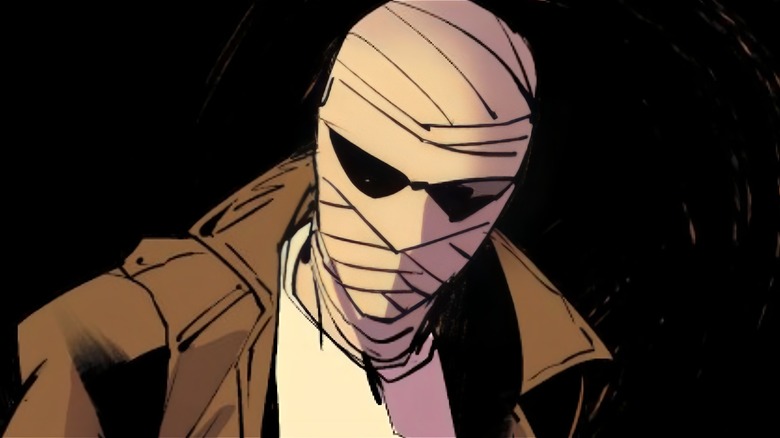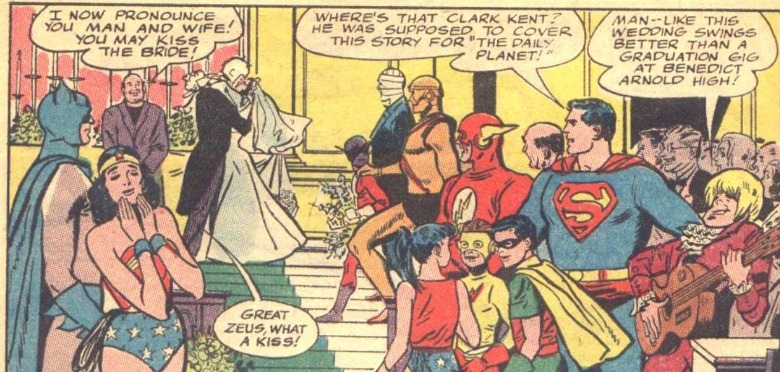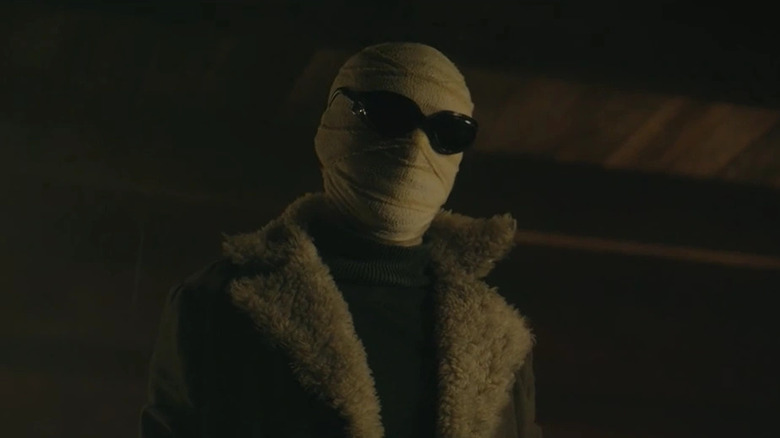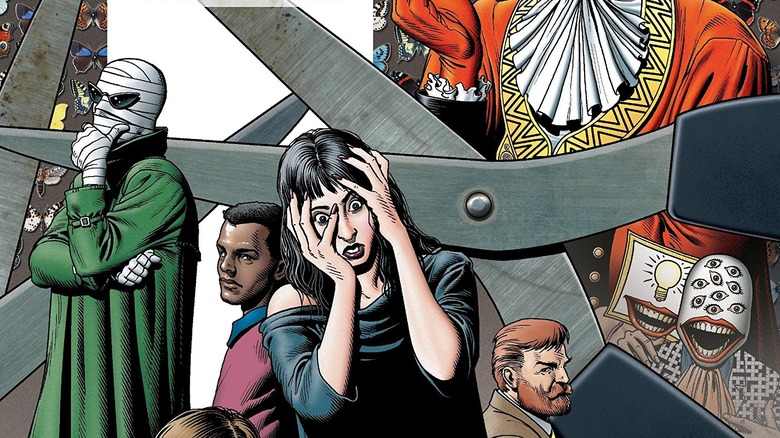Doom Patrol's Negative Man Reveal Is Exactly What The Comic Character Always Needed
Spoilers for "Unstoppable Doom Patrol" #4.
DC Comics' newest "Doom Patrol" run is pulling straight from the cult-favorite live-action series, as the show's storyline additions to Larry Trainor — namely, his sexuality, and his struggle to be true to himself — have officially become comics canon.
In "Unstoppable Doom Patrol" #4 by Dennis Culver, David Lafuente, Brian Reber, and Pat Brosseau from DC Comics, the Doom Patrol's inter-dimensional therapy sessions with team psychologist Dr. Syncho shines a closer look at the backstories and psyches of the oddball heroes. After talking with Degenerate about showing off his real self and Rita Farr about her survivor's guilt and anxiety about pending doom to the team, Dr. Syncho meets with Negative Man. In a conversation that's the first in some time between the bandaged former pilot and the Doom Patrol's therapist, Larry dives into his pre-radioactive past, back before he hosted an alien negative spirit. Referencing his past life, Trainor describes how he used to escape his problems by flying with the U.S. Air Force — and in one key moment, the comic shows him being comforted by a fellow male pilot.
At first glance, the moment might seem like nothing more than Negative Man discussing his loneliness. However, by showing Larry's relationship with another male pilot, the comics confirms that Larry's closeted past from the "Doom Patrol" TV series has become part of the comics character, as well, adding new — and fitting — layers to the longtime DC superhero.
Larry Trainor's comic book history
Larry Trainor's Negative Man first debuted in "My Greatest Adventure" #80 by Arnold Drake, Bob Haney, and Bruno Premiani. Larry was part of the original team, which also featured Rita Farr's Elasti-Girl and Cliff Steele's Robotman, led by Niles Caulder, who went by the title "The Chief." As on the TV series, "Doom Patrol" features a team of misfits who have each suffered catastrophic injuries that permanentely changes who they were. For Trainor, he is introduced as a pilot who is exposed to radioactivity in the sky, terribly scarring his body. As a result, Larry bandages himself head to toe, but also gains the superpowers of a radioactive Negative Spirit. Later, Grant Morrison would establish that Larry's accident was orchestrated by Caulder himself, so he could have his own team of heroes who have dealt with life-changing tragedies.
Until this newest comic, Negative Man hasn't had much of a romantic history in the comics, though he has expressed affection towards Rita. However, his pining for Rita ends with her choosing another Doom Patrol member, Mento, instead of him, and Larry accepts the situation, attending the wedding between the two characters:
Since the 1960s, though, the Doom Patrol has had an uneven history with DC Comics and hasn't really explored Larry's personal relationships on a meaningful level. That's all changing now, and it's largely thanks to the 2019 "Doom Patrol" television series, which significantly changed Negative Man to make his backstory even more captivating.
Larry Trainer evolved in the live-action Doom Patrol universe
When HBO decided to adapt "Doom Patrol" to the small screen, Jeremy Carver, who developed the series, shared in a Q&A he wanted to make Larry Trainor a more complex character who not only had to deal with the comic book version's superpowered isolation, but also had a history as a closeted gay man hiding his true self from the world. As he explained, "It was really interesting to me to be telling the story of someone who felt different on the inside back in the day and felt like he was forced to hide it, and now he looks very different on the outside in the current day, and how that struggle sort of compounds itself onto one person."
His origin as a pilot stayed the same, but the show added that he was hiding an affair with another man from his wife and child. Showcasing how a closeted man in the 1960s navigated a hypermasculine profession proved riveting, with Larry becoming a fan-favorite character with audiences. His storyline wasn't just something you rarely saw in superhero media, but rarely on TV shows of any kind. Indeed, this characterization was a major factor in why Matt Bomer signed up for the role, with the actor telling DC.com, "A big reason why I wanted to be a part of Doom Patrol is because I've never really seen a gay male superhero."
The "Doom Patrol" TV series created new layers to Negative Man's backstory, added depth to the character, and made what was a pretty standard origin absolutely heartbreaking. Larry can never be his true self — not before he gains powers, and definitely not after he is transformed.
Negative Man's new layers fit perfectly with Doom Patrol's history of progressiveness
Frankly, this development feels so natural that it's almost surprising it took so long to happen. Negative Man's new dimensions feel like a storyline that could be ripped right from the pages of the greatest "Doom Patrol" stories in the nineties.
Grant Morrison and Richard Case's "Doom Patrol" comics explored major themes regarding sexuality, including introducing Danny the Street, a crossdressing, genderqueer sentient street who offered refuge to those who needed it. Meanwhile, the comic featured Larry Trainor merging with Doctor Eleanor Poole to become the intersex hero Rebis. In Rachel Pollack and Scott Eaton's follow-up run on "Doom Patrol," the first transgender hero, Coagula, was also introduced. "Doom Patrol," especially in the 1990s, wore its progressive nature as a badge of honor — unafraid to platform characters and backgrounds that comics often ignored.
Over three decades after Morrison and Case's run began, and now that the "Doom Patrol" television series has ended, it's great to see "Unstoppable Doom Patrol" continue to tell subversive stories about the eclectic crew of weird superheroes. Negative Man's queerness felt like it belonged in the comics the moment it appeared in the live-action series, so to see "Unstoppable Doom Patrol" bring his updated history to the page not only adds layers to Negative Man, but creates a definitive origin for the hero that should be the status quo in all future adaptations. Negative Man's comic and television history merging is the perfect evolution for Larry Trainor.
"Unstoppable Doom Patrol" #4 by DC Comics is in comic book stores and available at online retailers now.




